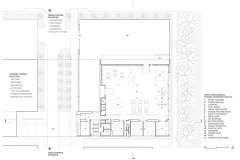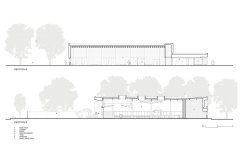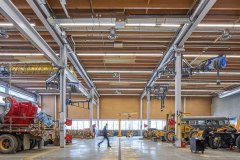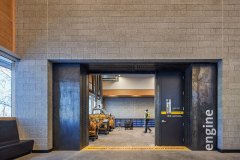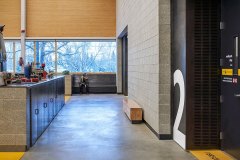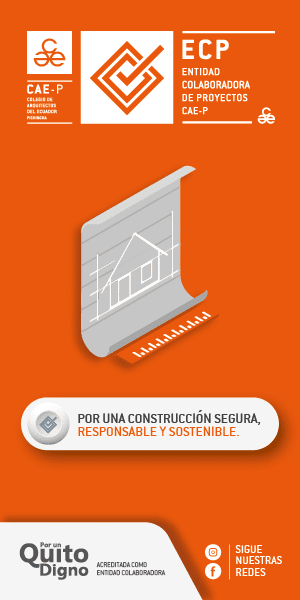
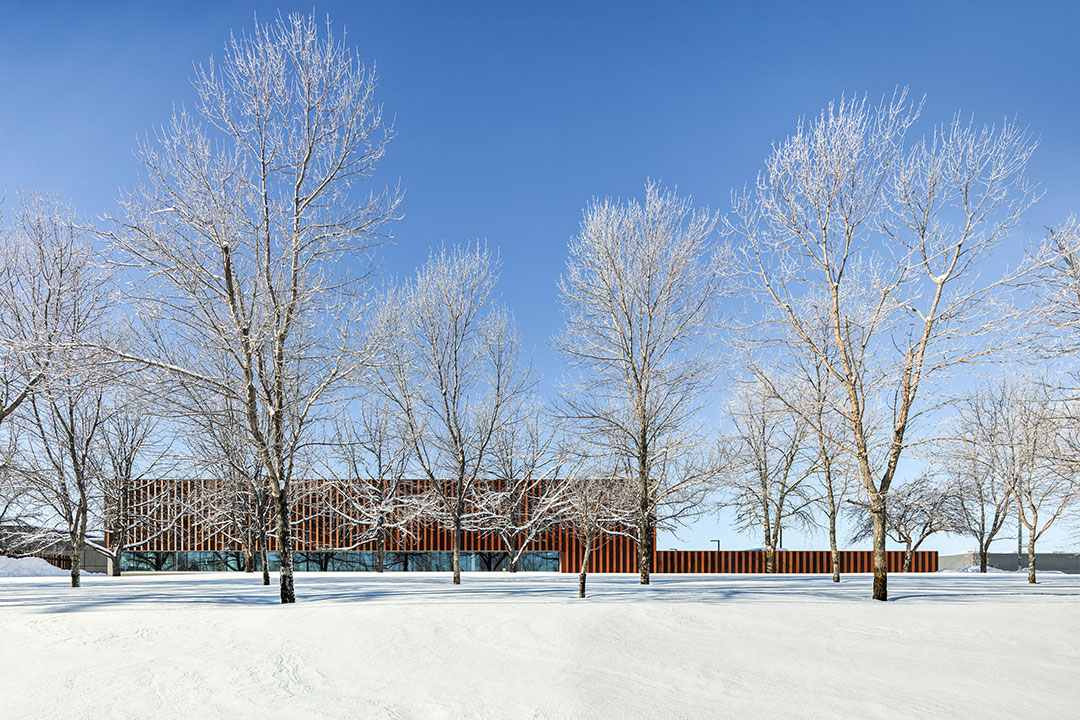
BAQ 2020
PREMIO PANAMERICANO | EDIFICIOS ADMINISTRATIVOS, INSTITUCIONALES Y CORPORATIVOS
CANADÁ
Autor/es: Office of McFarlaneBiggar Architects + Designers inc. – Steve McFarlane, Principal, Architect AIBC, Nick Foster, Principal, ARB
Colaboradores: Beth Denny, Associate, Architect AIBC; Alex Vanderlee, Intern Architect AIBC; Magali Baily, Architect AIBC; Sam Clark, ARB; Cameron Fraser, BEDS, M. Arch; Tara Espey, BA (hons) Des, MSc Des.
The ‘Heavy Mechanical Trades Training Facility’ is the newest addition to the College of New Caledonia’s Main Campus in Prince George, BC. The project supports the college’s mission to provide access to lifelong learning for the communities throughout the region and to facilitate the achievement of diverse personal educational goals.
The region is characterized by rugged natural landscapes and resources that propel thriving farming, forestry, mining, and tourism industries. Many of these industries depend on the use of sophisticated large-scale vehicles and equipment. In response, the building includes state-of-the-art workshops, engine testing labs, tool and heavy equipment training aid storage, and computer spaces; all of which adopt advanced production and organizational philosophies to emulate current industry practices for both training and the development of expertise to service this critical equipment. Student safety, low building maintenance, high-durability, and the acknowledgement that the college is principally a winter campus were additional aspects of the brief.
The $18M building delivered under the federal Strategic Innovation Fund program, mandated strict schedule constraints that compressed design to six months and limited construction to twelve.
The design approach is rooted in the modesty and authenticity of vernacular industrial typologies, re-interpreting them to create an elegant, robust and highly functional educational facility. The architectural team translated this approach into the following design elements:
ENCLOSURE. The building’s enclosure is a simple folded expression enveloping the flexible long-span internal spaces. The weathering steel façade was inspired by heavy-duty caterpillar tracks. The repetitive panels incorporate a subtle crease to improve their strength; reducing the required material thickness while introducing a dynamic shadow-play.
LIGHT. The building is further defined by the bold interplay of solid and void, tempered by abundant daylight and views over a row of mature oak trees. Careful consideration was given to the low arc of the northern sun and the atmospheric clarity present throughout the year. Sunlight enables the cladding to behave like a sundial with shadows on the creased façade evolving throughout the day and across the seasons.
WOOD. The exposed structure is treated as architectural finish throughout to express the immediacy of industrial building, and in response to the accelerated construction schedule. Modular prefabricated laminated veneer lumber (LVL) roof panels were carefully designed to accommodate integrated services to reduce on-site construction time.
MASONRY. The remaining superstructure is exposed steel and masonry, celebrated for its rawness. Masonry is given a ground face finish, relating to the other neighbouring trades buildings through texture and materiality.
SUSTAINABILITY. Several sustainable innovations support LEED Gold certification: passive solar orientation, super-insulated building envelope assemblies, in-floor radiant heating, displacement ventilation, and sophisticated heat recovery systems. Low-emitting robust materials such as locally sourced veneered plywood and blackened steel are used to promote healthy interior environments for students and instructors.
Intentionally located at the campus’ front door on Highway 97, the new Heavy Mechanical Trades Training Facility showcases the College of New Caledonia’s innovative approach as a premier trades training center in Northern BC, bolstering the pride of students, faculty, and the wider community.

